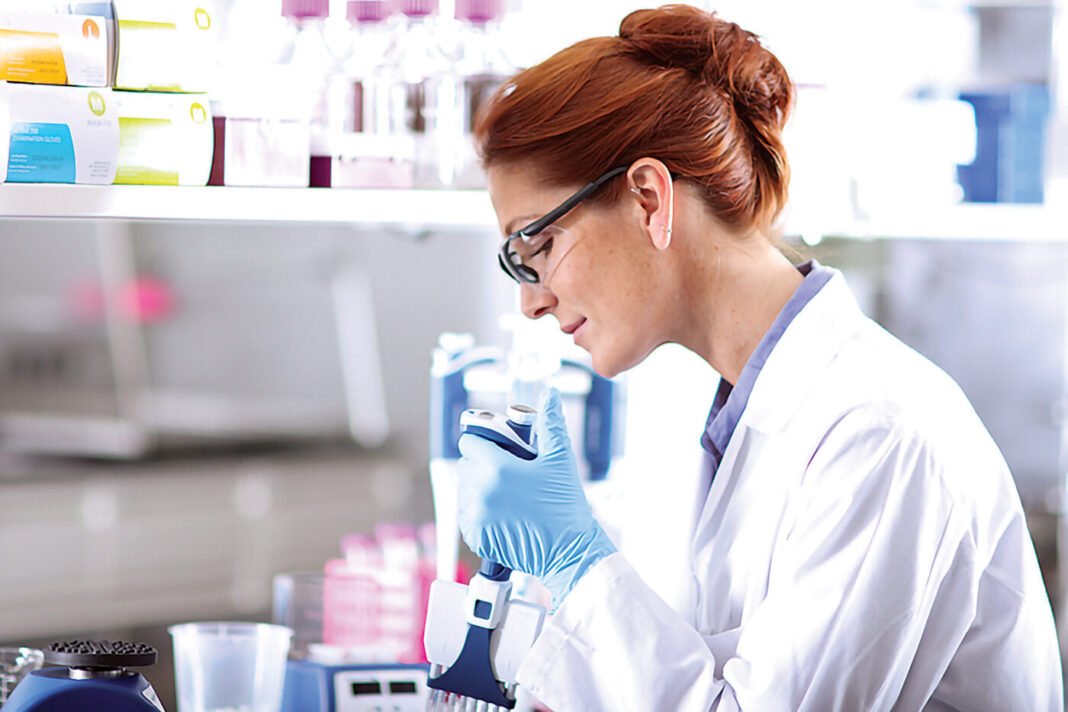As the biopharmaceutical industry sharpens its focus on gene therapy, opportunities for advancements and challenges in manufacturing processes remain. While the industry has made progress to effectively treat and control diseases based on regulatory approvals for novel therapies, the industry must continue to find efficiencies and optimize manufacturing processes to deploy gene therapies economically and at scale.
Ger Brophy, PhD, executive vice president of biopharma production at Avantor, offers insights on how the biopharma industry can evolve its processes through lessons learned from the manufacturing of monoclonal antibodies, supplier collaboration, and other production activities.
GEN: We’ve heard a lot over the past year about cell and gene therapy—two exciting medical innovations. What successes have you seen recently, and what challenges are still ahead?

Executive Vice President, Biopharma Production, Avantor
Brophy: Genuine progress is being made in the longstanding battle to effectively treat and control disease, as evidenced by some of the first regulatory approvals for new therapies of their kind and the mergers and acquisitions (M&A) activity within the pharmaceutical industry since 2019.
Approvals for gene therapies have been for rare diseases with small patient groups. In Europe, Bluebird Bio’s treatment for β-thalassemia, a form of anemia, was approved by the European Commission (EC) for use with patients 12 years of age and older.1 And Kite Pharma, acquired by Gilead Sciences, has seen positive results as it seeks to extend its Yescarta® label, a treatment for certain types of non-Hodgkin lymphoma, into relapsed or refractory indolent (slow-growing) non-Hodgkin lymphoma.2
The licensing agreement between Roche and Sarepta Therapeutics at the end of 2019 to launch and commercialize a gene therapy addressing Duchenne muscular dystrophy (DMD)3 only solidifies big pharma’s interest in this growing space. This will bring the sophistication of label and geographic expansion strategies to bear on these therapies in 2020 and beyond.
This year, the COVID-19 pandemic has temporarily disrupted the pace of research and approvals of new gene therapies. We’re seeing delays to clinical trials not only for gene therapies, but also for all molecules, from small to large biotech firms. As of the end of May, 1,273 trials and counting were reported as “on hold,” impacting well over 200,000 people and 573 companies.4 However, we are currently setting a new, historic pace for new therapies to move from research to full-scale manufacturing.5 This may set a precedent for the future to help with fast-tracking cell and gene therapies as well.
GEN: What are the most promising targets within gene therapy?
Brophy: Although the approvals for treatments of rare diseases are certainly early wins, the impact of gene therapies will significantly expand as treatments can address larger patient groups and broader-reaching diseases such as multiple myeloma, leukemia, and other forms of cancer.
At the Alliance for Regenerative Medicine’s Cell & Gene Therapy Meeting on the Mesa event last fall, the significant response and survival rates from patients with diffuse large B-cell lymphoma, acute lymphoblastic leukemia, non-Hodgkin lymphoma, and spinal muscular atrophy were discussed.6 Treatments for these diseases involve at least two different approaches: ex vivo and in vivo.
Chimeric antigen receptor (CAR) T-cell therapies are essentially ex vivo gene therapies: The patient’s T cells are modified with a viral vector, then readministered to the patient. This mode of action underpins treatments such as Yescarta from Kite. By contrast, in vivo therapies take an engineered molecule and administer it directly to the patient in a systematic or targeted way. For example, Luxturna®, developed by Spark Therapeutics (a subsidiary of Roche) for the treatment of biallelic RPE65 mutation–associated retinal dystrophy, is targeted to the patient’s eye when administered.
Regardless of the method, scalability and manufacturability are the two closely related challenges the industry faces, especially if gene therapies are to fulfill their clinical potential.
At first, the questions to be answered appear quite challenging: Can we manufacture gene therapies at scale, safely and at reasonable cost so patients have access to treatments? For ex vivo cell therapy, the challenges are different from those posed, for example, by monoclonal antibodies. There is no inventory of the product, and the patient waits for the treatment. This makes the risk/reward balance very different, and it requires companies to think about drug products differently.
GEN: What are your views on the process challenges associated with manufacturing gene therapies?
Brophy: There are many process challenges, but across the board, we need to implement improvements in raw material inputs and innovations in manufacturing technology if we are to deploy gene therapies economically and at scale.
First, the numbers in production don’t add up. Adherent and packaging systems are inefficient. If you look at the gene therapy viral vector levels, the magnitude of the therapy being delivered to the patient in increments from E6 to E16 shows that the industry is simply unable to produce enough to satisfy growing demand.
Either something must change in the process itself or massive manufacturing capacity needs to continue building to sustain current production methods. In Astellas Pharma’s recent acquisition of Audentes Therapeutics, the deal’s value, analysts suggested, wasn’t limited to the clinical assets that Audentes brought. In fact, much of deal’s value was due to the acquired company’s fully integrated adeno-associated virus (AAV) manufacturing capacity.7 In the meantime, there will be significant reliance on contract manufacturing organizations (CMOs) for capacity. We’ve seen this recently through various partnership announcements, such as the one from Ultragenyx Pharmaceutical and Daiichi Sankyo.8
Another challenge that comes to mind is standardization. Variables and failure modes must be taken out of the process—innovations in process technology can make a real difference here.
Production systems can be standardized and closed so that they’re less exposed to failure modes. Processes can be miniaturized to drive cost efficiencies and, perhaps, better clinical outcomes. We can employ better workflow technologies such as single-use, sterile fluid transfer. It is also probable that fill/finish requirements will be different for cell and viral products. Improved excipient technologies may soon play a large part in better patient experience and response.
GEN: What are some of the major gene therapy production components that impact optimization potential?
Brophy: We must anticipate innovation and optimization from advances in academia, in addition to step changes in process improvements from contract development and manufacturing organizations (CDMOs) and other producers. This can be done with close monitoring and, where relevant, through partnerships, which are best formed early, as well as through involvement in consortiums and professional organizations, such as Rx-360 and the Drug, Chemical, and Associated Technologies Association.
Specifically, in raw materials, we see more requests for cGMP grades of materials that have never needed to be made at scale or to cGMP specifications before. Even if these are available at the correct analytical grade, there is a considerable raw materials expense associated with components such as plasmid DNA.
The requirement for biological activity to be retained limits the use of harsh purification methods and adds a special sensitivity that potentially harmful or adventitious agents cannot be introduced through the raw materials supply chain. This is an area that greatly benefits from a close partnership between manufacturers and their raw materials suppliers, to better understand the requirements for cGMP materials and begin meeting them early in the therapy development and manufacturing process.
GEN: How would you compare the manufacture of monoclonal antibodies to the manufacture of gene therapies?
Brophy: Despite the compelling clinical results from autologous CAR T-cell treatments, the distributed nature of the process and ongoing issues with cell expansion steps have raised concerns about how scalable these treatments are. For gene therapy, the nature of drug substance is more similar to what we’re used to in traditional biologic drugs such as monoclonal antibodies, vaccines, and recombinant proteins.
Some tools are similar, including single-use bioreactors and fermentation media and supplements. But even here, differences exist in impeller setup to optimize production from suspension cell lines.
In addition, we’re seeing an increased customer sensitivity to fermentation components, such as fetal bovine serum and its country of origin. Given the nature of the downstream process and the requirement to preserve biological activity, there is a growing desire to minimize the potential introduction of adventitious agents through raw materials in upstream processes. And there are manufacturing methods and components that have not previously been used in regulated processes, such as cesium chloride density gradient centrifugation, new forms of size-exclusion chromatography, and affinity chromatography.
GEN: What should manufacturers do to ensure a smoother process as a treatment progresses from early to commercial stages and through regulatory approval? How can suppliers help?
Brophy: There is a real opportunity for producers to work with raw materials suppliers earlier, especially in navigating the cGMP raw materials and single-use landscapes.
As both a materials and single-use manufacturer, we’re uniquely positioned to help customers determine where to adopt technical, quality, and regulatory best practices that have been developed for the manufacture of established therapies such as monoclonal antibodies and vaccines. Whether it’s characterizing raw materials to see how trace metals can impact downstream processing, reducing risk through the use of aseptic single-use technology, or implementing cGMP materials early on to help expedite scale-up—there are certainly lessons to be learned.
Developing partnerships with providers as soon as possible should increase process efficiency and minimize later missteps, even on joint approaches to regulators. Additionally, it helps with tracking and measuring a raw materials supplier’s quality system to ensure consistency over time. Breakdowns in quality management systems can be catastrophic, so the importance of collaborations and quality agreements with raw materials suppliers cannot be understated.
GEN: Finally, what are your visions in terms of next-generation technologies or process developments?
Brophy: Gene therapy manufacturers and the suppliers that support them need to develop stronger partnerships. In areas such as cell culture components, production chemicals, single-use technologies, sterile fluid transfer, and excipients—as well as the technologies surrounding these process components—there is value to trying new solutions while working to improve the manufacturability of gene therapies.
Even at the early stages of trials, we can better understand the variability that comes from research data and use it to correlate with clinical and process outcomes. Taking out manual steps as early as possible is important, as is as creating closed systems using sterile fluid transfer technologies to eliminate process risk.
Overall, it’s an exciting time. We anticipate expanded programs in basic research leading to the development, understanding, and characterization of new drug targets. This should drive an innovative program of clinical development married to improvements in process technologies. Both of these will ensure a constantly evolving landscape, and we need to be ready to address the challenges ahead.
Ger Brophy, PhD, is executive vice president, biopharma production, Avantor.
References
1. Blood Transfusions/Iron Chelation. Life with b-Thalassemia [a website developed and sponsored by Bluebird Bio]. Accessed July 16, 2020.
2. Unite & Conquer: Accelerating Progress Together. ASCO20 Virtual. Accessed July 16, 2020.
3. Roche enters licensing agreement with Sarepta Therapeutics to improve the lives of patients living with Duchenne muscular dystrophy. Roche. Published December 23, 2019. Accessed July 16, 2020.
4. COVID-19 Executive Briefing. GlobalData. Updated July 14, 2020. Accessed July 16, 2020.
5. Cell & Gene Meeting on the Mesa. Allegiance for Regenerative Medicine. Accessed July 16, 2020.
6. Gene and Cell Therapy FAQs. American Society of Cell + Gene Therapy. Accessed July 16, 2020.
7. Taylor NP. Astellas inks $3B Audentes buyout to expand in gene therapy. Fierce Biotech. https://www.fiercebiotech.com/biotech/astellas-inks-3b-audentes-buyout-to-expand-gene-therapy. Published December 3, 2019. Accessed July 16, 2020.
8. Ultragenyx Enters into Strategic Partnership with Daiichi Sankyo for Gene Therapy Manufacturing Technology. Ultragenyx Pharmaceutical. Published March 31, 2020. Accessed July 16, 2020


